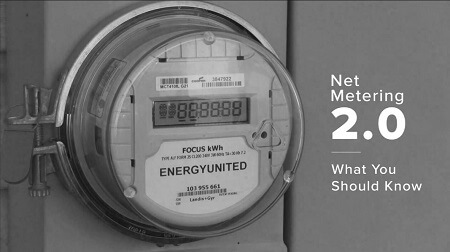Net Metering 2.0 Fact Sheet
| Sullivan Solar Power


There are a lot of questions about what net metering 2.0 means for current solar power customers and those looking to go solar in San Diego Gas & Electric’s service territory, which includes San Diego County and parts of South Orange County.

Here’s all you need to know about the coming changes, whether you are a current solar power customer or are considering going solar.